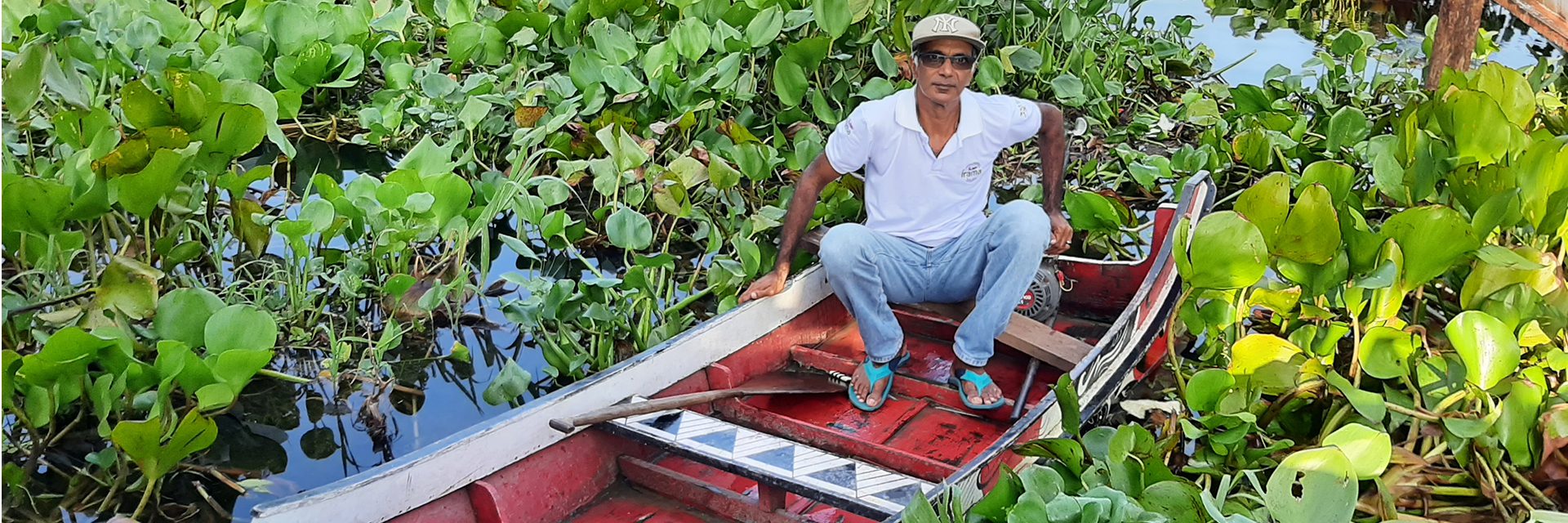(January 3, 2024) Environmentalist Nimal Raghavan, who has revived 180 lakes in India, has won people’s heart in Kenya as well. He has earned himself the moniker ‘Wa Muva’, or ‘Son of Rain’ in the drought-stricken country, through his efforts to tackle water scarcity. “I have revived six lakes so far in Kenya, working along with the Ministry of Water,” Nimal tells Global Indian. “I was invited by the Green Africa Foundation to collaborate on their lake revival drives.”
Leaving behind a thriving career in Dubai, Nimal redirected his efforts to environmental activism, focusing on causes like organic farming and the rejuvenation of water bodies, along with tree planting, rainwater harvesting and the fight against climate change. So far, Nimal has overseen lake restorations in seven states across India and the planting of over 1.8 million saplings. Now, he aims to restore water bodies in 10 African countries, especially in areas where the water scarcity problem is most acute. “Last year, we brought water to one of the driest places in India (Ramnad) and to drought-stricken Kenya.”
View this post on Instagram
Recently, Nimal was awarded the title of Jal Prahari here in India, a recognition by the Ministry of Jal Shakti. “It was an immense pleasure to have received the award from ‘The great Waterman of India’, my inspiration Rajendra Singh,” he remarked.
Rising above odds
Born in Nadiyam Village, nestled in Tamil Nadu’s Peravurani district, often known as the ‘rice bowl of Tamil Nadu’, Nimal’s childhood came with challenges. When he was six months old, his father was diagnosed with a brain tumour and the family’s financial stability crumbled.
“My family spent everything on his treatment. Although we managed to save him, people began seeing me as a bearer of misfortune,” Nimal recalls. “Passers-by would deliberately alter their paths upon seeing me on the streets.”

Nimal Raghavan
Determined to rise above adversity, Nimal pursued engineering and secured his first job in Pune and eventually relocated to Dubai. His life took a positive turn financially after this move, allowing him to even construct a house in his native village.
The twist of tale
When he was on a vacation in his village in 2018, he witnessed devastation caused by a cyclone. The place was severely affected. In every house that Nimal visited he saw people crying and sobbing due to the misfortune caused by nature. “90 percent of the livelihood got affected,” he shared.
Deeply in love with his native place, Nimal extended his leave. “Instead of retreating, I rallied a team,” he says. Starting from his own village, he lent a helping hand to 90 nearby villages affected by the cyclone. This natural calamity unveiled an overlooked crisis—the mismanagement of water resources due to poor knowledge on the part of the villagers.
Realising the severity of water wastage in his region, Nimal embarked on a mission – to manage the water resources. His efforts didn’t just revive lakes, rather they resurrected hope. With meticulous planning, Nimal’s team rejuvenated water bodies, elevating water levels from 700 to 60 feet within six months, revitalising agricultural cycles in the process.
View this post on Instagram
“We realised that due to poor management of water resources, the farmers who previously cultivated crops thrice a year could barely manage once annually, Nimal says. Their efforts involved desilting, erecting boundaries, establishing inlet-outlet connections, and facilitating water retention. “Gradually, we successfully escalated the water level from 700 feet to 60 feet within a mere six months. This success sparked a realisation that if six months of dedicated work could resolve a three-decade-old problem here, why not replicate this in other regions?” remarks Nimal.
The power of action
Each revitalised lake symbolised more than water; it represented restored livelihoods. Nimal’s impact echoed when a grateful elder, previously unable to farm for many years due to water scarcity, handed him the first produce from his revived land—a gesture that remains Nimal’s most cherished moment. “The old man said I have been offering my first harvest to God since I have been farming but this time I’m giving this to you.” This gesture meant a lot especially when Nimal had seen times when people used to change their paths when they saw him coming.
Driven by a simple yet profound belief—no one should go hungry, no one should pay for water—Nimal’s vision is colossal. He yearns for a world where simplicity sparks profound change. He believes that even a drop of effort can cause ripples of transformation.

Nimal Raghvan in Kenya
“I work with the simple goal that no one should die of hunger. I don’t want anyone to pay for water. Through simple mind-set, we can bring powerful changes. With this attitude, I have set to achieve my big dreams,” he signs off.





😍😊🤗 very excellent Nimal Raghavan brother water worries 😊😍